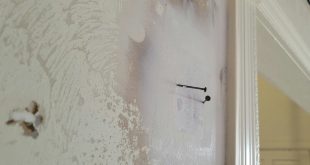Yes. Most homeowners find that their gutter guards pay for themselves within 3 to 5 years if they were paying for professional cleaning twice a year. After that point, the yearly savings go straight into your pocket.
But, in reality, how much you save depends on your situation, where you live, and what kind of trees you have around your house. In general, though, leaf guards promise to cut down on gutter cleaning and protect your home from water damage.
What Leaf Guards Cost Upfront
Leaf guard installation costs vary a lot based on the type you pick and how big your house is. Basic mesh screens that you can put on yourself might cost $200 to $500 for a whole house. Mid-range gutter covers run between $1,500 and $3,500 installed. High-end systems like LeafGuard or LeafFilter can cost $5,000 or more for an average home.
Compared to gutter cleaning: Professional services charge between $120 and $230 per visit for gutter cleaning, and most homes need cleaning at least twice a year. Over time, these costs add up.
When Leaf Guards Can Save Money
If you have lots of trees near your house, especially oak, maple, or pine trees that drop leaves and needles constantly, leaf guards can cut your gutter cleaning needs by up to 70 percent. Homes in wooded areas in places like Portland, Seattle, Atlanta, Charlotte, and Pittsburgh see the biggest benefits because they deal with heavy leaf fall every autumn.
Water damage savings: The real money savings come from stopping water damage before it starts. Clogged gutters that overflow can cause water to leak into your basement, damage your foundation, rot your fascia boards, and create problems with your roof. Fixing basement water damage can cost $2,000 to $10,000. Foundation repairs run even higher. If leaf guards stop even one of these problems, they’ve paid for themselves many times over.
When Leaf Guards Don’t Save Money
If you live in an area without many trees, leaf guards might not be worth the cost, to be honest. A house in a desert area like Phoenix or Las Vegas, or a newer neighborhood where trees haven’t grown big yet, probably doesn’t need gutter guards.
Bad quality or badly-installed guards can get clogged: The problem is that some types of guards can get covered with small debris like pine needles, seeds, and shingle grit. When this happens, water runs right over the guard and past your gutters completely. You still need to clean them, just less often, and cleaning guards can be harder than cleaning open gutters.
Avoid clogged guards by choosing good contractors who have experience with gutter guard installation and can recommend good-quality leaf guards.
Differences Between Types of Leaf Guards
Not all leaf guards work the same way.
- Mesh screens are cheap but can get clogged with small stuff.
- Reverse curve guards make water flow around a curve into the gutter while leaves fall off, but they can let water overshoot during heavy rain.
- Foam inserts block debris but can hold water and grow mold.
- Micro-mesh guards work best but cost the most.
The type of debris around your house matters too. Big leaves from oak or maple trees are easier to keep out than pine needles or seed pods. If you have pine trees, you need a guard with very small holes, which costs more.
When Should I Consider Having Leaf Guards?
Leaf guards save the most money when you have lots of mature trees close to your house, you pay for professional gutter cleaning at least twice a year, you plan to stay in your home for at least five years, and you pick a quality guard system that matches your debris type.
They probably won’t save you money if you have few, distant, or no trees near your house, you clean gutters yourself, you’re planning to move soon, or your gutters are old and need replacing anyway.
How Much Can I Save With Leaf Guards?
Here’s a simple way to figure out if guards make sense for you. If you pay $150 twice a year for gutter cleaning, that’s $300 yearly. Over five years, you’ll spend $1,500. If guards cost $2,500 installed, you’ll break even after about eight years. If guards cost $1,500, you break even in five years.
But you also need to add the value of avoiding water damage. Even one basement flooding or foundation issue that guards prevent makes them worth it. The problem is you can’t predict when that would happen.
Is it Worth it to Install The Leaf Guard Myself?
You can install some types of leaf guards yourself if you’re comfortable working on a ladder. Basic mesh or foam guards are easiest for DIY. This cuts your cost a lot, maybe down to $500 or less for a whole house.
The downside is that DIY guards often don’t work as well as professional systems. They might not fit as tightly, water might get behind them, and they might not come with warranties. If you mess up the installation, you could actually make your gutter problems worse.
Conclusion
Leaf guards can save you money, but only in the right situation. They work best for homes with lots of nearby trees where professional gutter cleaning costs add up year after year. The money you save on cleaning, plus the water damage you avoid, can make guards worth the upfront cost.
For homes without many trees, the high installation cost probably won’t pay off. You’re better off just having your gutters cleaned once or twice a year, or doing it yourself if you can safely get on a ladder.
Before you buy, get quotes from at least three companies, ask about warranties, check what kind of debris your neighbors deal with, and talk to people in your area who have the same guards you’re thinking about. Their real experience will tell you more than any sales pitch.
 Blogging Heros
Blogging Heros




